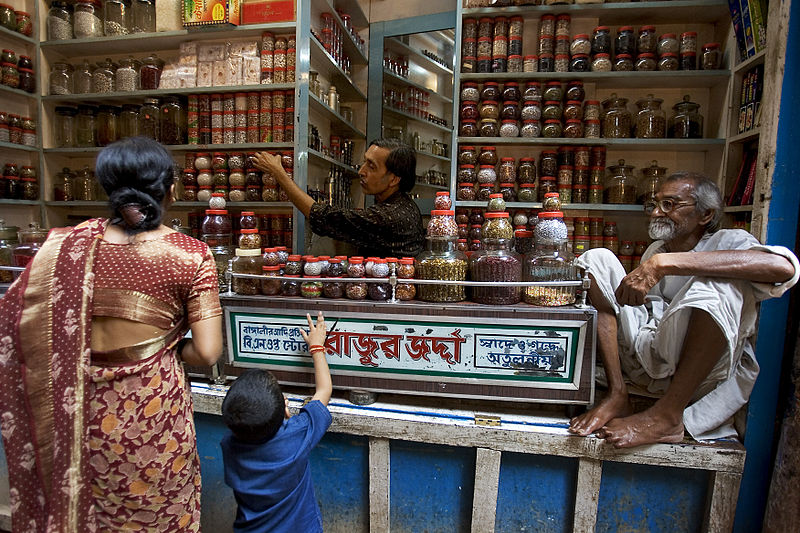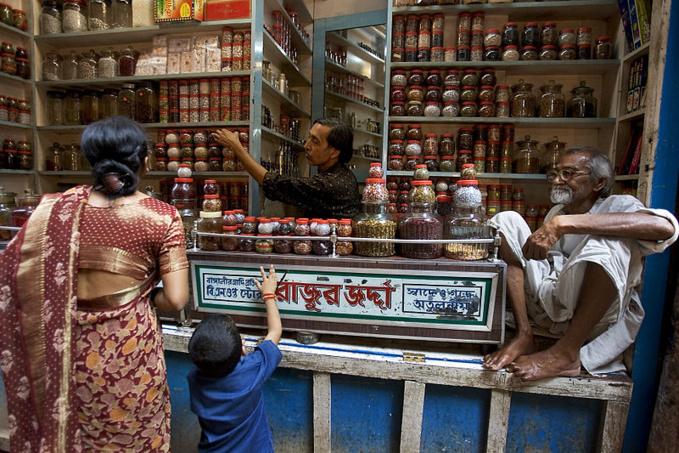"The rating agencies have conflicting standards", - said Chief Economic Adviser to the Ministry of Finance Arvind Subramanian.
The country's government said in a report that India has an obvious advantage over other developing countries, including by indicators such as default risk. India is wondering why S&P Global Ratings granted China with "AA-" in spite of growing level of debt and economic slowdown in the country.
Indian Finance Ministry stated that India is on the path of significant growth, which, "combined with its commitment to budgetary discipline, demonstrated during the last three years, indicates that the deficit and the debt ratio will decline significantly in the coming years".
From 2009 to 2015, China's debt rose from 142% to about 205% of GDP, while economic growth has slowed from over 10% to 6.5%, says the report.
At the same time, India's rating remained at "BBB-", despite "significant improvement" in growth and economic stability in 2014, according to the ministry’s statement.
India’s ratings by S&P Global, Moody's and Fitch are just one notch above "junk" level. The agencies note that India has the largest budget deficit among Asian countries, which hinders improvement of the country’s sovereign rating.
S&P shut out increase of India's rating in 2017 because of weak public finance and low per capita income. The experts said that the country needs to put more efforts to lower public debt to below 60% of GDP.
Meanwhile, annual economic report of Narendra Modi’s government said that neither demonetization nor Brexit would prevent India from remaining the world’s fast-growing economy.
In the 2017-2018 fiscal years, real GDP growth in India will amount to 6,75-7,5%. However, "India will be the fastest growing major economy in the world even with this forecast", according to the paper. Recall that earlier in January the IMF said that China's growth is outstripping India.
In the current fiscal year, the country’s GDP growth is expected to amount to 7%, which is significantly lower than 7.6% in 2015-2016. It’s not surprising that the coming fiscal year will be difficult. The economy will suffer from effects of demonetization, rising oil prices and tense situation in the trade.
Demonetization
The study explains that Modi's ban on certain kinds of banknotes is still putting pressure on the economy.
The researchers said that demonetization has had some positive effects, such as reduction of unaccounted income, opportunity for economic growth in the long term, increase in tax revenues.
On the other hand, this process could result in huge job losses, lower incomes of companies, all kinds of social unrest, particularly in cash-intensive industries.
India’s GDP growth fell mainly due to the fact that the financial crisis has led to a sharp drop in demand. Supply chains were disrupted because of lack of sufficient working capital.
Companies and households suffer from the uncertainty, not being able to invest and make decisions about purchase of certain goods. Lack of highest-denomination banknotes also hit property prices.
Universal basic income
The economic review also mentioned an idea of universal basic income, or unconditional cash transfers to the poorest and most marginalized. It could probably become an alternative to hundreds of social security programs in India, which mainly proved to be ineffective in reducing level of poverty, particularly in regions suffering from poor management.
With proper implementation of the program, the lever of poverty may be reduced to 0.5%. The program’s costs can amount to 4-5% of GDP, compared with current subsidies of about 3%.
Tax on goods and services
The economic review described this tax as "a bold experiment in India’s cooperative sector", which can promote the country’s GDP growth to 8-10%.
In August last year, the Indian parliament considered 122-th amendment to the Constitution of 2014, which allows implementation of this bill. The law was first discussed in 2000. It is expected that now it will replace at least 17 state and federal taxes and will unite them in the overall tax structure.
The current tax system in India is made up of direct (i.e. income tax) and indirect taxes (value added tax, sales tax, luxury tax).
Now, the government is proposing a four-level tax structure with payments of 5%, 12%, 18% and 28% - lower rates on essentials and highest – on luxury. Nevertheless, analytics are still concerned with method of implementation the system since process of transition to the new system should be a complex administrative and technological tactic.
source: bloomberg.com
The country's government said in a report that India has an obvious advantage over other developing countries, including by indicators such as default risk. India is wondering why S&P Global Ratings granted China with "AA-" in spite of growing level of debt and economic slowdown in the country.
Indian Finance Ministry stated that India is on the path of significant growth, which, "combined with its commitment to budgetary discipline, demonstrated during the last three years, indicates that the deficit and the debt ratio will decline significantly in the coming years".
From 2009 to 2015, China's debt rose from 142% to about 205% of GDP, while economic growth has slowed from over 10% to 6.5%, says the report.
At the same time, India's rating remained at "BBB-", despite "significant improvement" in growth and economic stability in 2014, according to the ministry’s statement.
India’s ratings by S&P Global, Moody's and Fitch are just one notch above "junk" level. The agencies note that India has the largest budget deficit among Asian countries, which hinders improvement of the country’s sovereign rating.
S&P shut out increase of India's rating in 2017 because of weak public finance and low per capita income. The experts said that the country needs to put more efforts to lower public debt to below 60% of GDP.
Meanwhile, annual economic report of Narendra Modi’s government said that neither demonetization nor Brexit would prevent India from remaining the world’s fast-growing economy.
In the 2017-2018 fiscal years, real GDP growth in India will amount to 6,75-7,5%. However, "India will be the fastest growing major economy in the world even with this forecast", according to the paper. Recall that earlier in January the IMF said that China's growth is outstripping India.
In the current fiscal year, the country’s GDP growth is expected to amount to 7%, which is significantly lower than 7.6% in 2015-2016. It’s not surprising that the coming fiscal year will be difficult. The economy will suffer from effects of demonetization, rising oil prices and tense situation in the trade.
Demonetization
The study explains that Modi's ban on certain kinds of banknotes is still putting pressure on the economy.
The researchers said that demonetization has had some positive effects, such as reduction of unaccounted income, opportunity for economic growth in the long term, increase in tax revenues.
On the other hand, this process could result in huge job losses, lower incomes of companies, all kinds of social unrest, particularly in cash-intensive industries.
India’s GDP growth fell mainly due to the fact that the financial crisis has led to a sharp drop in demand. Supply chains were disrupted because of lack of sufficient working capital.
Companies and households suffer from the uncertainty, not being able to invest and make decisions about purchase of certain goods. Lack of highest-denomination banknotes also hit property prices.
Universal basic income
The economic review also mentioned an idea of universal basic income, or unconditional cash transfers to the poorest and most marginalized. It could probably become an alternative to hundreds of social security programs in India, which mainly proved to be ineffective in reducing level of poverty, particularly in regions suffering from poor management.
With proper implementation of the program, the lever of poverty may be reduced to 0.5%. The program’s costs can amount to 4-5% of GDP, compared with current subsidies of about 3%.
Tax on goods and services
The economic review described this tax as "a bold experiment in India’s cooperative sector", which can promote the country’s GDP growth to 8-10%.
In August last year, the Indian parliament considered 122-th amendment to the Constitution of 2014, which allows implementation of this bill. The law was first discussed in 2000. It is expected that now it will replace at least 17 state and federal taxes and will unite them in the overall tax structure.
The current tax system in India is made up of direct (i.e. income tax) and indirect taxes (value added tax, sales tax, luxury tax).
Now, the government is proposing a four-level tax structure with payments of 5%, 12%, 18% and 28% - lower rates on essentials and highest – on luxury. Nevertheless, analytics are still concerned with method of implementation the system since process of transition to the new system should be a complex administrative and technological tactic.
source: bloomberg.com



















